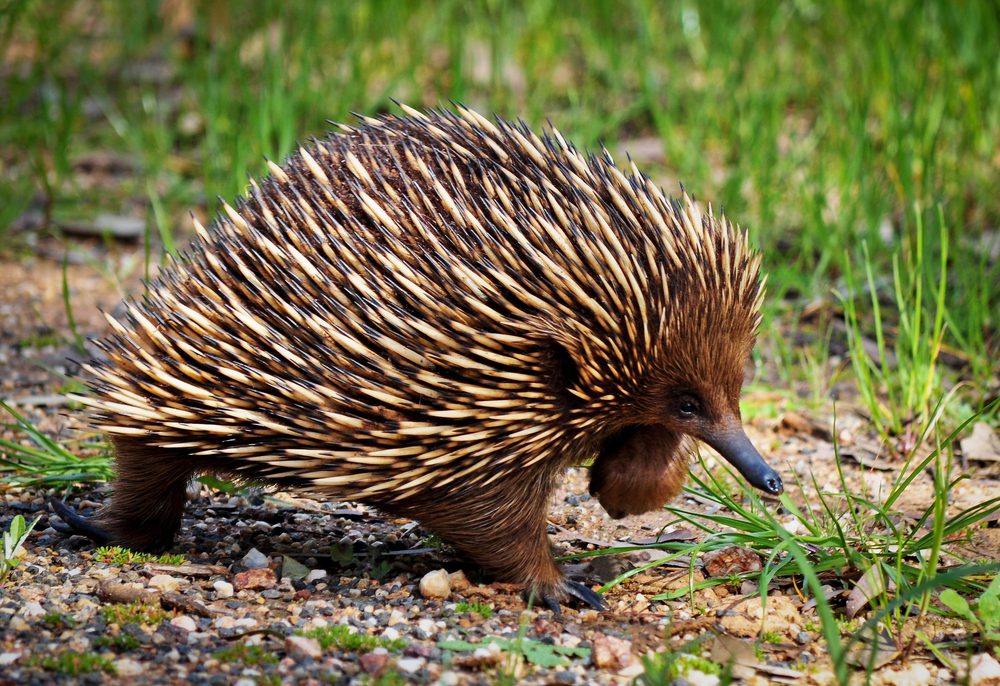![]()
If you look at where wombats deposit their poo, you realise they must be able to perform some surprising acrobatics. It has always amazed me to see wombat scats on top of grass tussocks or logs, because I’ve always wondered how the stocky creatures must have manoeuvred themselves to put it there.
It turns out these sturdy marsupials also engage in a different kind of acrobatics: we recently received a video from Lyndell Giuliano and Andy Carnahan at Tomboye, New South Wales, who had filmed two wombats in the wild “doing the wild thing”!
While we know it happens, because there are baby wombats replenishing the population over time, it is not often humans get to witness such an event.
A rare sighting of above-ground intimacy
Scientists have previously documented wombat sex in some detail. Prior to the observations noted in the review, it was believed to occur underground in the privacy of the burrow, which was presumably the reason why it was rarely observed.
While we still don’t know a lot about what wombats do get up to underground, wombats have been spotted mating above ground in the open!
In this scenario, the male wombat has been described to chase the female wombat, often biting her, and pushing her on to her side, before also laying on his side and mating with her.
In this recorded “rom-com”, it appears only the male is on his side during mating.
Violence and death
Other marsupials are also quite aggressive during mating. The Tasmanian devil, probably not unsurprisingly given its name, is particularly aggressive. Males drag females into their den and hold them captive, sometimes for days.
Among the tiny, rodent-like antechinus and phascogales, males are so determined to mate with as many females as they can that it results in a huge surge of stress hormones, leading to complete organ failure, and subsequently death.
This reproductive strategy, called “semelparity”, also occurs in salmon, and some frogs and lizards – but it is extremely rare among mammals.
And in the insect kingdom, it’s not unheard of for males to die after mating, though the reasons are often quite different.
Female praying mantises attract males and after the event decapitate their male companion and devour them. This cannibalism strategy enables females to produce more eggs. Males that are consumed are provided with a reproductive advantage through potentially increased numbers of offspring.
Male bees (drones) mate with females (queens) in the air. In some species, during the height of the “process”, the end of the male’s barbed endophallus is ejected from his body, and is retained with his sperm inside the queen. His work done, the male subsequently falls from the sky dead.
Subterfuge and fusion
Many animals use pheromones, essentially chemical messengers between members of the same species.
Some orchids have taken advantage of these chemicals, mimicking the pheromones of female wasps. Male wasps are tricked into thinking they have found their female, and while mating with the flower, become coated in pollen. These wasps subsequently mate with another orchid, thus transferring the pollen, and subsequently the orchid is fertilised.
There are some even more bizarre mating encounters in the animal world. The female deep sea angler fish allows the male to fuse with her, and sometimes even more than one male will fuse to the same female.
In return for sperm, the male anglerfish obtains nutrients from the female via their fused circulatory system. A truly “until death do us part” relationship.
Survival of the quickest
Among marsupials, some species (polyprotodonts) give birth to many more young than they can support. These so-called “supernumerary” young then race to reach a teat first, in what is essentially survival of the fittest.
The maximum number of young able to survive is therefore determined by the maximum number of teats.
Virginian opossums have 13 teats and can give birth to up to 56 young (although the average is more like 21), thus many newborns die shortly after birth, unable to find and attach to a teat. Tasmanian devils likewise produce an average of 39 young, but only have four teats, thus the maximum surviving litter size for devils is four.
Wombats are not polyprotodonts and only have two teats. However they usually only have one joey at a time.
Surprising organs
Much can be said for the phalluses of the animal world. None more so than echidna penises with their four heads, of which they only ever use two at a time.
Sharks likewise have two claspers, extensions of the pelvic fins which support internal fertilisation, of which they only utilise one during mating. Whale penises have been said to have been mistaken for deep sea monsters, or perhaps Kraken tentacles, observed wrestling with their whale prey.

Male echidnas have a four-headed penis, while females have two uteruses. Image credit: Vicki Cain/Shutterstock
Not to be outdone by the males, female marsupials have three vaginas and two uteruses. Two of the three vaginas are used for reproduction to allow sperm to travel up to fertilise the eggs. The third vagina, located between the other two, is for giving birth.
Female platypuses and echidnas have two uteruses and two ovaries. However, in platypus, only the left ovary is functional, and thus they only use one side of their reproductive tract for producing young.
Back to the wombats
As we have seen, there are a broad range of strategies animals use to produce young. Some reproductive strategies we are familiar with, others are deadly.
It puts the wombat video in perspective: our correspondents report the creatures walked away unharmed from the scenario, albeit with some love bites. At least everybody survived.![]()
Julie Old, Associate Professor, Biology, Zoology, Animal Science, Western Sydney University and Hayley Stannard, Senior lecturer, Charles Sturt University
This article is republished from The Conversation under a Creative Commons license. Read the original article.
Source Link: Rare Video Of Wombats Having Sex Sideways Offers A Glimpse Into The Bizarre Realm Of Animal Reproduction